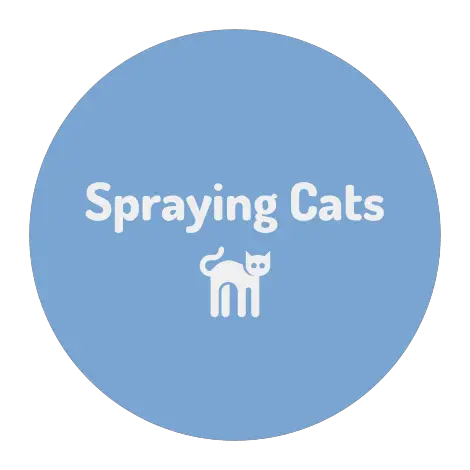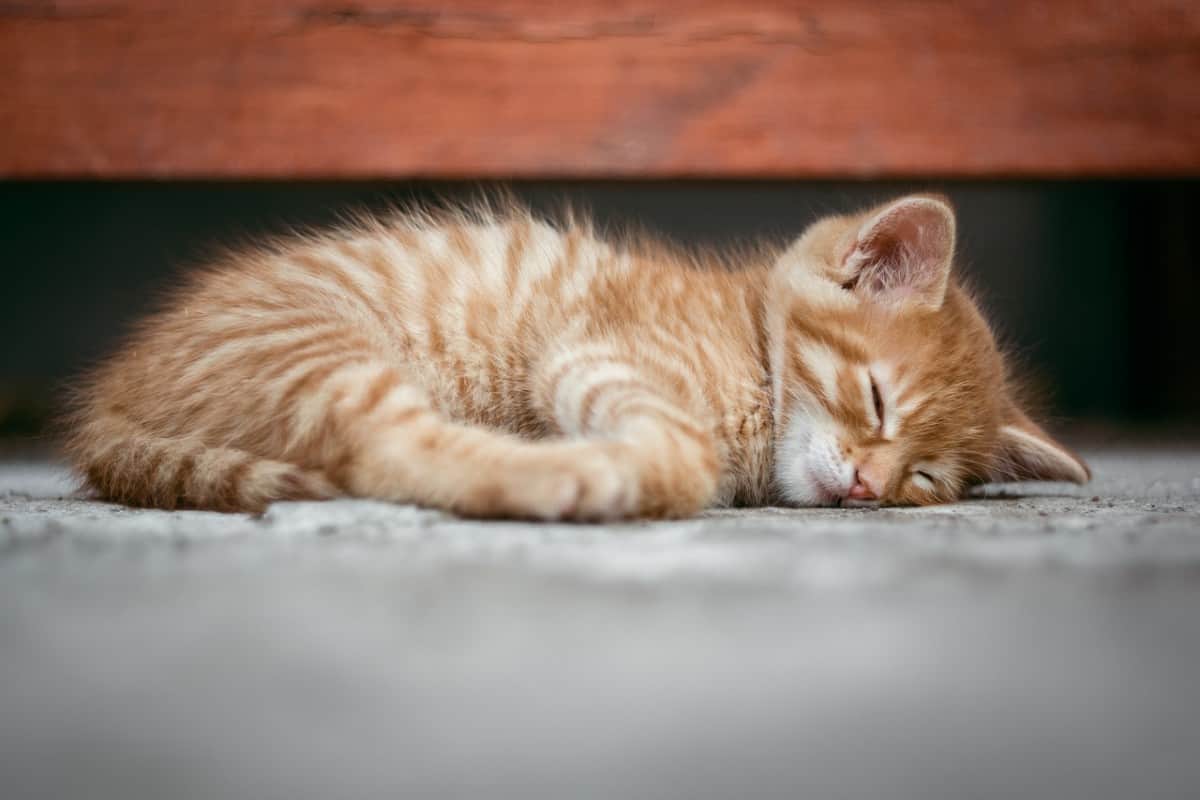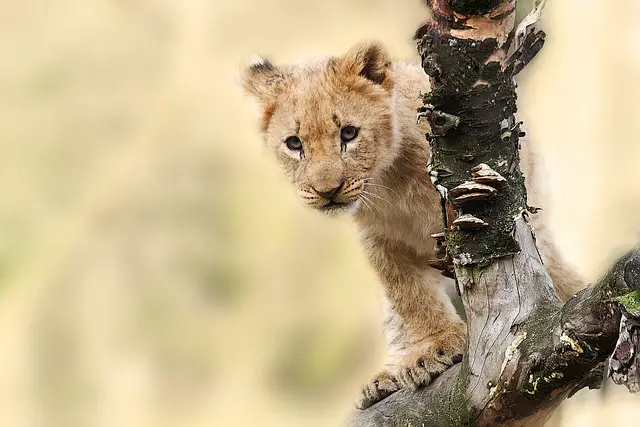Cats are masters of communication, and they talk to each other using plenty of vocal techniques (like meowing, growling, and hissing) and non-vocal techniques (through posture, kneading, and more). On top of that, cats also use smells and physical contact as ways of expressing themselves.
You might already be familiar with cats’ vocal communication which includes meowing, hissing, and even growling when they’re angry. But what you might not know is that they’re also communicating silently with things like their posture and the ways they touch each other as well.
Cats are very sophisticated creatures, and that’s very easy to see when you understand how they communicate.
To help you understand cats much better, we’re going to explore all of the different vocal and non-vocal methods that felines use to express themselves to cats and even humans!
How Cats Communicate Vocally
For us humans, cats’ vocal communications are usually the most noticeable. That’s because we mainly communicate with our voices. For cats, though, this is just one of several ways they talk to us and each other.
A cat’s collection of verbal communication tools includes many methods like meowing, purring, chirping, and more. Each of these sounds carries a different meaning, and it also depends on the cat’s mood.
Meowing
Believe it or not, meowing isn’t the primary way that adult cats talk to each other. The only reason we tend to assume that is that domesticated cats love to meow at us, humans!
Typically, cats only meow a lot while they’re still kittens. It’s one of the ways that they use to get their mother’s attention when they’re hungry or need help.
Cats might use meowing to express many different emotions to humans, but most of them are either neutral or positive. Meowing isn’t something a cat uses to signal anger or frustration. As you’ll see later, they have other ways of doing that.
Purring
The soft vibration of a cat’s purr isn’t for nothing. Cat’s can generate this sound using their throats from very early on in their lives. Its purpose? Purring helps to communicate that a cat is in a very friendly mood.
Generally, purring is a positive form of feline communication. However, it also serves a second purpose. Purring is an indicator that the cat may be injured or not feeling well.
Some people believe that cats purr when they’re sick or injured because they want to let you know that they’re vulnerable and need your company. If you think that this is the case, it would be good to show them a little extra love and affection.
Chirping
If you watch a lot of cat videos online, you’ll see that many people have caught their cats chirping, almost like birds. Pay attention, and you’ll notice that cats do this while staring right at their prey, like an insect or an actual bird.
These noises will tell you that the cat is feeling like a predator at the moment. Their jaws vibrate and create that noise because they’re preparing to bite down on their prey, whatever animal it may be.
Growling, Hissing, And Snarling
Of course, all animals need a way to communicate when they’re feeling defensive or angry. That’s why cats growl, hiss, and snarl sometimes. If you see your cat doing this, you should give them some space as it’s a clear sign that they’re feeling aggressive.
Cats usually make these aggressive sounds at the same time they’re communicating aggression with their bodies. Later in this article, we’ll explore how they do that using things like their posture and eyes.
Howling
Howling is also common with cats, though it’s not the kind that you’d recognize from a wolf or a dog. A cat will howl when they’re feeling threatened, and the tone of the sound can change depending on the cat.
Have you ever heard cats making lots of noise in the middle of the night when they’re about to fight? That’s what it sounds like when a cat howls. In that kind of situation, they’re feeling threatened and are trying to scare off the opposing cat.
How Cats Communicate With Their Bodies
Cats don’t communicate with words the same as humans do. As a result, they have to rely on more than just the sounds that they make with their mouths. So, in addition to sounds, cats also communicate visually using their bodies.
There are two zones of the cat’s body that they use for communication. The first is around their face, particularly with their ears and eyes. Other than that, they also communicate using their posture and tail.
Ears And Eyes
Cats can use their ears and eyes to communicate both positive emotions as well as aggression.
For example, when a cat makes eye contact with another feline and blinks slowly, that’s widely understood as a sign of affection. When they do that, it means that they trust the other cat and feel very safe around them.
But if a cat is making intense and direct eye contact, especially with dilated pupils, that’s a sign that you should be careful. Direct staring is a way for cats to issue a challenge to each other, or to communicate that they view them as a threat.
Cats usually make direct eye contact while they flatten their ears at the same time. This combination is a clear indication that the cat is alert and aggressive towards the other feline.
But why do cats flatten their ears when they’re about to fight? That’s because they’re instinctively trying to make their body a bit more stealthy by reducing their overall profile.
Posture and Tail
Cats have a long list of different postures and tail positions that they might assume based on how they feel. But to simplify things, you can classify all of those postures into two categories: postures that make them look smaller, and poses that make them look bigger.
What’s the difference?
Well, when cats are feeling scared and vulnerable, they’ll usually make themselves smaller. They might do this by wrapping their tail around their bodies while crouching over their paws placed very closely together.
When they’re scared, cats might also keep their bodies low and close to the ground while leaning away from whatever it is that’s scaring them.
On the other hand, when cats feel confident or aggressive, they’ll do quite the opposite. They’ll unfold their bodies to make themselves as big and intimidating as possible.
A confident cat will have their tail up in the air as they walk around without any hesitation. When cats come across a threat, they will make themselves bigger by arching their backs. The fur on their backs and tails will also stand, giving them a much bigger silhouette to try and scare off their opponent.
How Cats Communicate Through Touch
Cats use more than just sounds and postures to tell each other things. It’s actually quite impressive how they can also communicate with physical contact. Some people would refer to this as ‘tactile communication’, and cats do it by grooming, kneading, and even biting.
Grooming
At this point, you probably already know that cats groom themselves by licking their fur. But did you know that they also use it to communicate with other cats?
When cats lick each other, that’s a sign that they trust each other. Cats often lick other felines as a way to bond and show affection, and doing it will strengthen the relationship that they have.
Kneading
One of the cutest things that cats do is ‘make bread’ or ‘make biscuits’. That’s the cute little name people have given for when a cat starts kneading their humans or the bodies of other cats.
Many people have always wondered why cats do this, and the answer is simple. That kneading motion that cats do with their paws is the same thing they did to their mothers when they were feeding as kittens.
So, if an adult cat starts doing the same thing, it’s trying to tell you (or the other cat) that these cats are feeling relaxed and affectionate. Cats knead you because it reminds them of when they were a baby enjoying the comfort and love offered by their mothers.
Biting
Cats also bite for different reasons. A soft bite is nothing to worry about since that’s just a way for them to show affection and play around. But if a cat bites hard and growls at the same time, that’s a sign of aggression.
How Cats Communicate With Smells
Like many other animals, cats also have a powerful sense of smell. That’s why they also use scents and odors as a form of communication, to leave a message even when they’re no longer around. Two excellent examples of this are urine spraying and rubbing or head-bumping.
Urine Spraying
This mode of communication is pretty straightforward, especially since animals like dogs also do the same thing. Cats like to spray their urine to mark their territory. Around the home, spraying on walls and other objects will inform other cats that they’re in someone else’s personal space.
Usually, cats will prefer to spray their urine on vertical surfaces. It’s an effective way to ‘leave a message’ for other cats that might cross through their marked territory.
Rubbing or Head-Bumping
The smell of cat urine is intense and therefore sends a powerful message to other cats in the area. However, they also have another scent-related method of communication that’s a bit more gentle: pheromones and chemicals that they leave around by rubbing or humping their heads and bodies against surfaces.
Typically, they do this by rubbing against other cats or even their human beings. That’s why you’ll notice that affectionate cats will often rub against the legs of their owners.
Not only do they do this to demonstrate affection, but they’re also using it as a way to gently mark the cats and people that they consider to be theirs.
Why It’s Important To Ask How Do Cats Communicate With Each Other
Knowing how your cats communicate with each other is very important for any cat owner/parent. In doing so, you’ll be able to understand what your feline is feeling at any given time. On top of that, their behaviors around the house will start to make a lot more sense.
That’s especially true for when your cat is feeling threatened, unsafe, or unwell. If you can understand your cat when it’s calling for your help, you can provide it with the care that it needs to feel safe again.
[su_box title=”Affiliate Disclosure”]This website is supported by its readers. Please assume that all links are affiliate links. If you make a purchase from one of the links we will make a commission from Amazon. Thank you.[/su_box]






